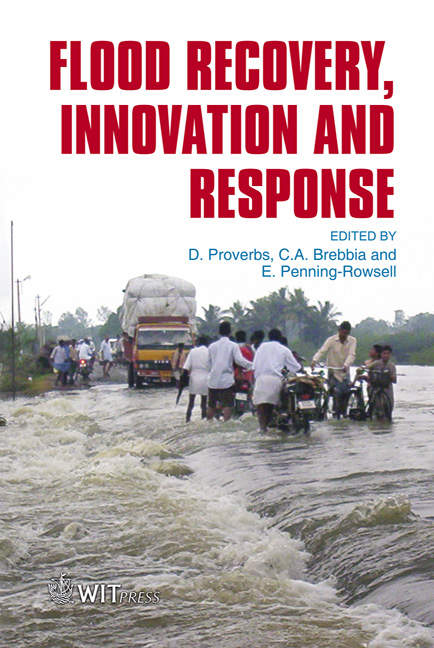Risk Management In Flood Events
Price
Free (open access)
Transaction
Volume
118
Pages
9
Page Range
175 - 183
Published
2008
Size
301 kb
Paper DOI
10.2495/FRIAR080181
Copyright
WIT Press
Author(s)
G. Ciaravino, L. Ciaravino, G. Grimaldi, G. Lombardi & L. S. Sorvino
Abstract
In the present paper, areas under risk of floods are identified on the basis of the codified return periods of flood events, and appropriate river strips are then identified, with reference to which the actions of territorial planning and risk mitigation works can be defined. Hydraulic risk is determined by evaluating the expected damage to vulnerable elements (first and foremost anthropic elements) resulting from the occurrence of an event of known dangerousness. Therefore the level of risk derives from the estimate of phenomenon dangerousness (linked to the identification of the relative river strips with assigned return period) and from the vulnerability of the exposed elements. The risk is determined by means of matrixes that, even if characterized by intrinsic limitations, make it fairly straightforward to estimate a small number of parameters and hence evaluate risk level and attention level in flood phenomena for single hydrographical networks. Keywords: flood event, hydraulic risk, mathematical model analysis, risk matrixes. 1 Introduction With every passing year, the scientific community observes ongoing climate change which has, among other things, modified the values of extreme hydrological events. Demographic increase combined with rising land prices due to the shortage of building areas, has led to a disordered and indiscriminate land use with all kinds of installations being built in areas at high risk of flooding. In conjunction with scarce monitoring and maintenance of the territory, modification of drainage networks, deforestation and topographical changes,
Keywords
flood event, hydraulic risk, mathematical model analysis, risk matrixes.





